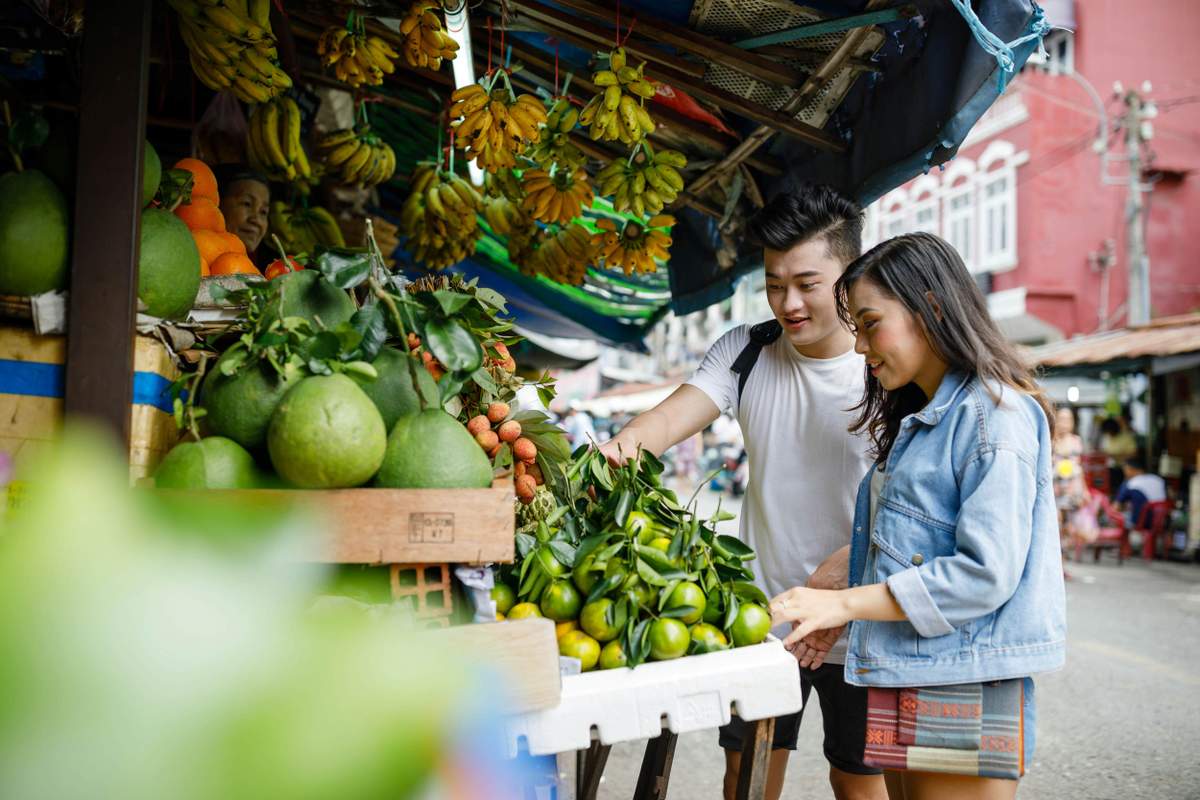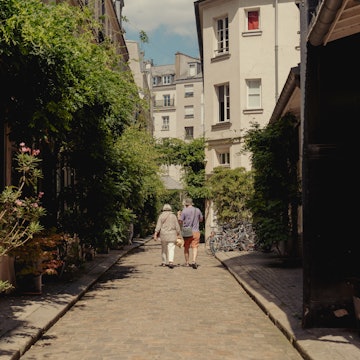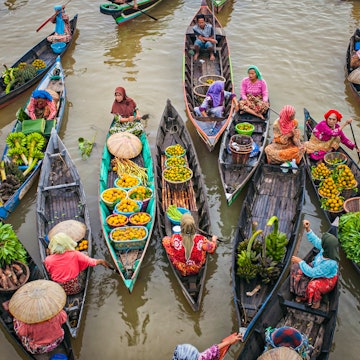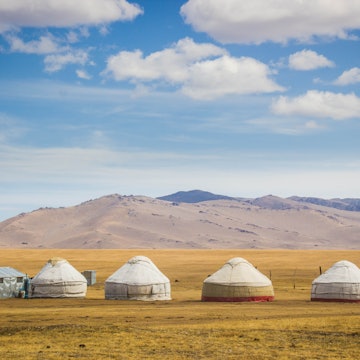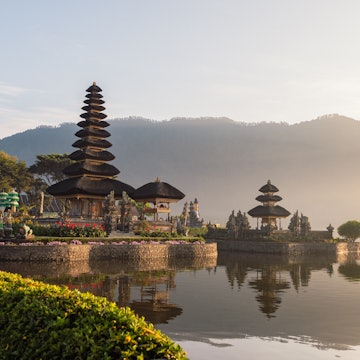

A boat in the Mekong Delta, Vietnam. Luciano Mortula - LGM/Shutterstock
The siren song of Vietnam has drawn countless travelers to its shores, in search of incredible landscapes, pearl-white beaches, chaotic and vibrant cities, and some of the best hospitality you’ll find anywhere.
The tough decision for travelers isn’t whether they should visit Vietnam. Given the countless options, it’s how they choose to visit. Do you start in Hanoi or Ho Chi Minh City (HCMC)? Do you swap the big-city experience for the beaches and seafood suppers of Phu Quoc Island? Do you look backward, and explore the history of a dozen rival empires? Or embrace the dynamic, modern Vietnam that has emerged from the crucible of conflict?
As exciting as such planning is, you’ll never cover everything in one trip, giving you many reasons to return over and over. Here's our pick of the best things to do on your next trip to Vietnam.
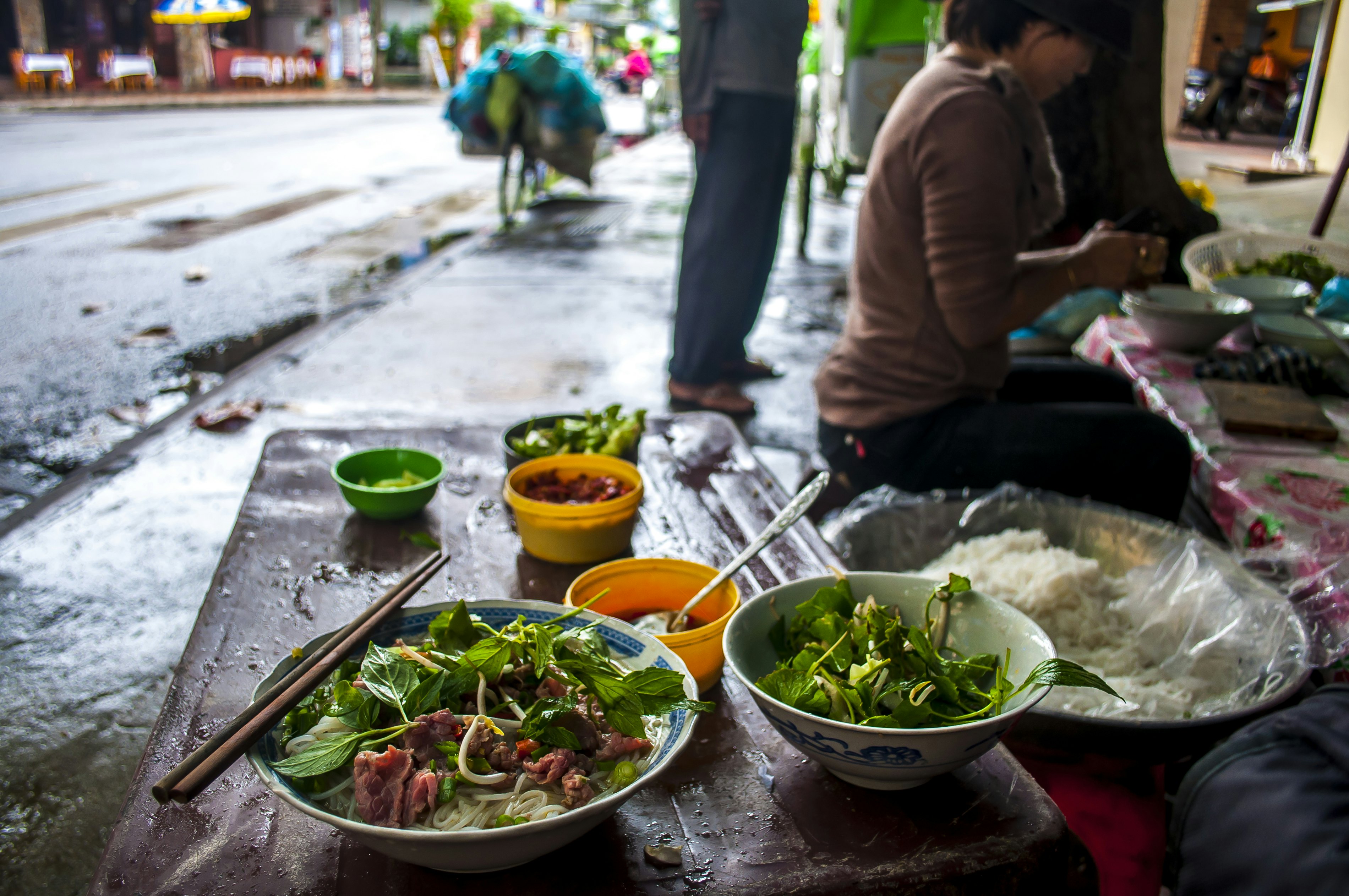
1. Taste imperial Vietnamese cuisine in Hue
Vietnam’s Nguyen Dynasty held court in Hue until 1945, and the city’s damaged but still impressive historic structures feel closer to imperial China than to the rest of Southeast Asia. For many travelers, though, Hue is all about the food. More than half of Vietnam’s estimated 3000 local dishes are believed to have originated here, from vermicelli-noodle-based bun bo Hue and crispy banh khoai pancakes topped with shrimp and pork to canapé-like, soft-and-crunchy banh it ram dumplings. The lavish imperial cuisine known as am thuc cung dinh – created by the emperors’ loyal chefs – can still be sampled in some of Hue’s top restaurants, such as Thin Gia Vien and Hoang Phu.
Planning tip: Don’t restrict yourself to posh imperial banquets. For less than 100,000d, you can gorge on tasty Hue staples at busy stalwart restaurants such as Madam Thu, or at food stalls on the streets.

2. Take a cooking class and learn how to make authentic Vietnamese dishes
There’s no better souvenir to bring home from your travels than the ability to prepare your own feast of local flavors. Indeed, Vietnamese food probably has more dinner-party cachet than better-known Thai cuisine.
Up and down the country, you’ll find cooking courses that start with a trip to the market to buy fresh ingredients and local herbs, and end with a banquet of the dishes you’ve prepared, covering everything from summer rolls to pho noodle soup. Hoi An is the most popular destination for aspiring chefs; we recommend small and personal Green Bamboo Cooking School. There are also good cooking schools in Hue, Hanoi and HCMC.

3. Explore the imperial Nguyen tombs in Hue
Hue gets a second spot on the list thanks to its astounding imperial tombs, which preserve the mortal remains of a string of Nguyen emperors and empresses. These range from dynasty-founding Gia Long to Khai Dinh, the last Nguyen emperor to be buried on Vietnamese soil (his son, Bao Dai, the final emperor of Vietnam, was interred in the Cimetière de Passy in Paris).
While crowds mob the Citadel and Imperial Enclosure, you can still find peaceful moments for contemplation by skipping the boat tours and renting a motorbike to visit the extravagant mausoleums along the Perfume River. Don’t miss the towering Thien Mu pagoda, which looms over the north bank on the city fringes.
Detour: Equipped with two wheels, you can also buzz north from Hue to enjoy unspoiled dune beaches on the sandy barrier island stretching north and south from Thuan An.

4. Stop by the Cao Dai Holy See in Tay Ninh
One of the world’s youngest faiths, the Cao Dai religion was founded in the southern town of Tay Ninh in 1926. The religion fuses elements of ancestor worship, folk religions, Confucianism, Taoism, Buddhism and Roman Catholicism, with the ultimate goal of freeing the soul from the endless cycle of reincarnation.
To explore its complex customs, head to the cathedral-like Cao Dai Holy See in Tay Ninh. Inside, you’ll see a range of iconography, including weapon-toting statues, an all-seeing eye and even a Communist-like red star. The sect reveres, among other figures, Jesus Christ, Buddha, Muhammad and even French novelist Victor Hugo.
Planning tip: Enter the shrine to witness prayers four times a day. If you have time to kill before or after a visit, take a detour 15km northeast to Nui Ba Den mountain. You can take a gondola followed by a hike to reach its summit cave temples, then whoosh back downhill on a luge-style slide.


5. Cruise Halong Bay’s stunning karst landscape
We’ll concede that Halong Bay – the atmospheric sprawl of rocky coves and eroded karst islands to the east of Hanoi – is hardly off the beaten track these days. But that doesn’t mean there isn’t more to discover away from the cruise-ship crowds. If a tour on a diesel-powered luxury junk doesn’t appeal, consider hiring a kayak to potter around Lan Ha Bay near Cat Ba Island, where outcrops sculpted by wind and waves emerge from the water like the teeth of sea monsters.
Alternatively, leave the diesel fumes behind in calmer Bai Tu Long Bay to the north, where more jungle-capped islands shelter low-key resorts and languorous beaches.
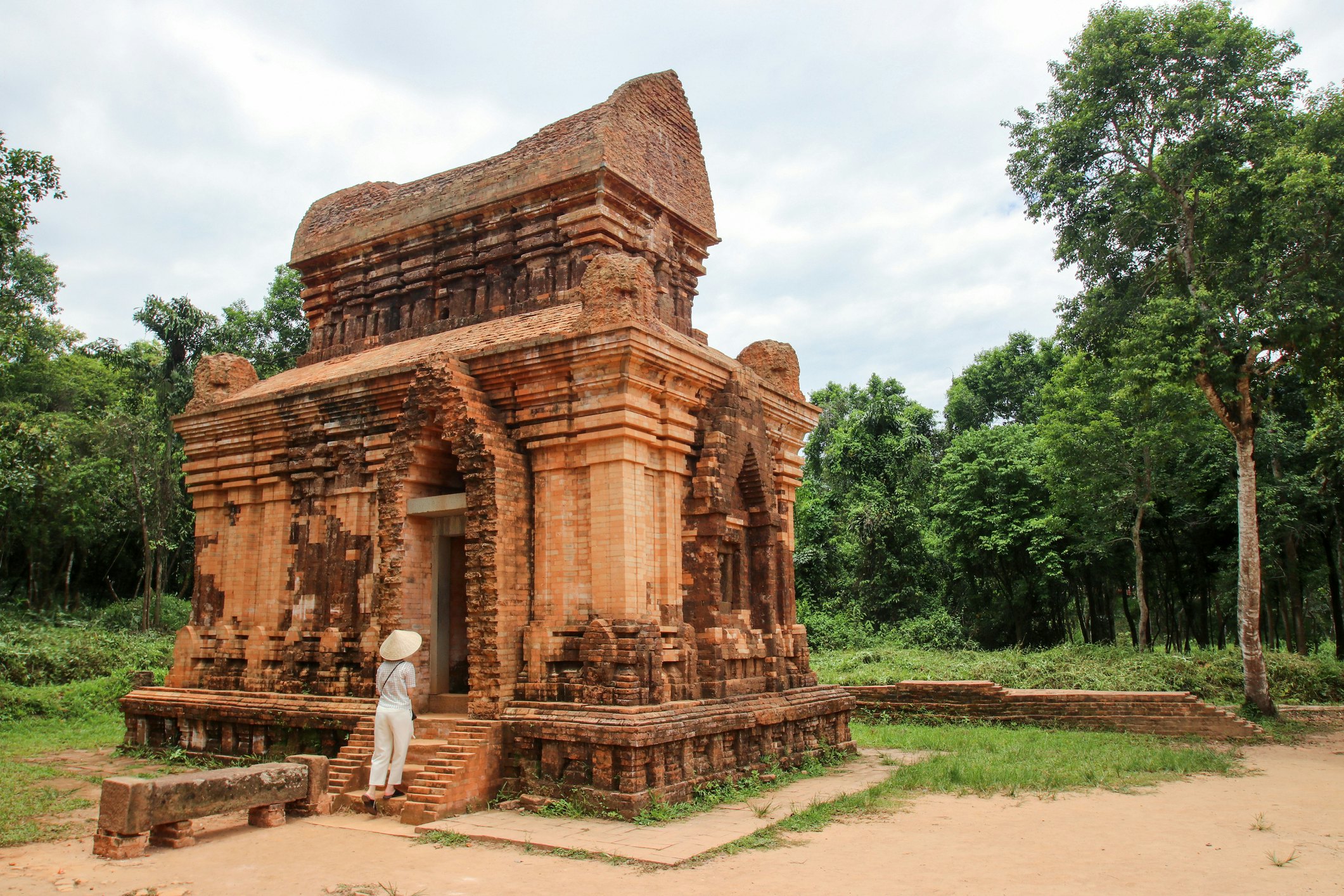
6. Learn about Vietnam’s religious history in My Son
While travelers mob the regal assembly halls, pagodas and historic homes of Hoi An, nearby My Son offers a calmer experience of Vietnam’s rich and layered past – particularly if you come in the afternoon. The big lure here is the atmospheric collection of UNESCO-listed Hindu temple ruins surrounded by jungle in a loop of the sacred Thu Bon River.
Sharing many architectural features with the Khmer temples of Cambodia and Thailand, these crumbling red-brick shrines were built between the 4th and 14th centuries CE by the Hindu kingdom of Champa, whose descendants – the Cham people – still populate pockets of central Vietnam. With only birdsong to disrupt the quiet, the site scores highly for atmosphere as well as history.
Detour: If you use Hoi An as a base for exploring My Son, set aside a day to visit the nearby Cham Islands, an impressive marine reserve whose granite specks are still inhabited by Cham people, most now followers of Islam.

7. Ride a motorbike through the highlands
Vietnam largely moves on two wheels, and a motorbike is by far the most enjoyable way to explore the hill country of the northwest – even if it takes some courage to adjust to the driving conditions, errant livestock and steep, winding roads. Rent a quality bike in Hanoi, then pop your wheels on the train to Lao Cai to avoid the nerve-jangling ride out of the capital.
Once you reach the heart of the hill country, rumble out to outlying villages far from the tourist crowds for epic views and nights in charming homestays run by members of Vietnam’s tribal minorities.
Planning tip: You’ll need an International Driving Permit to ride legally in Vietnam, and this is only available for certain nationalities. Many travelers manage to rent a motorbike without a permit – but if things go wrong, you won’t be covered by your travel insurance.

8. Trek the scenic hills beyond Sapa
The former French Hill station of Sapa is surrounded by mountains so impressive that French colonizers called them the “Tonkinese Alps.” The surrounding villages of the Hmong and Dzao ethnic minorities have become popular destinations for hikers – and somewhat commercialized in the process.
For a taste of the scenic serenity that first drew travelers to these lush green hills, head instead to drier, calmer Bac Ha, or the trails and mountain roads around Ha Giang province, tucked against the border with China and seemingly sculpted by the hands of the gods. Stay in hospitable homestays and explore markets, peaceful stilt-house villages, French-era relics and soaring limestone pinnacles, away from the maddening crowds.
Planning tip: While there’s plenty of competition for the title of best vista in Vietnam, the lookouts gazing over the Dong Van Karst Plateau are strong contenders. The area is designated as a UNESCO Geopark, and the trip from Yen Minh to Dong Van and over the Mai Pi Leng Pass to Meo Vac is particularly spectacular.
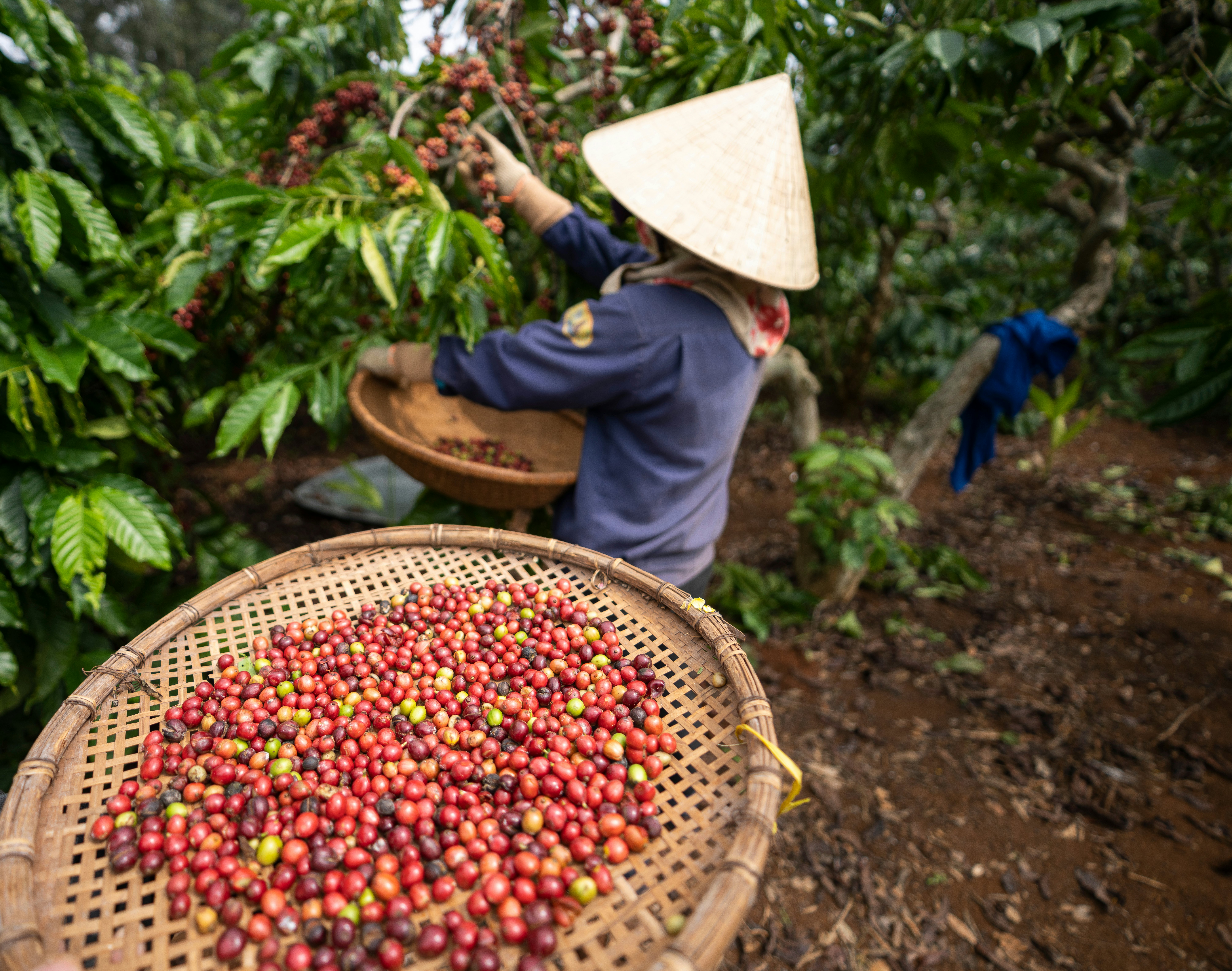
9. Sip a perfect cup of coffee in the Central Highlands
French colonizers brought coffee from the Arabian peninsula to Vietnam, yet the farmers of the Central Highlands mastered the art of coaxing quality beans from these undulating hills. Rising to 1600m, Dak Lak province provides the perfect terroir for growing robusta beans, and the regional capital of Buon Ma Thuot is a great place to tour plantations and track down a quality cup of cap he, particularly during the annual coffee festival in March. If you insist on arabica beans, head to Dalat and visit the community K’Ho Coffee cooperative to support local coffee growers from the K’Ho minority.
Planning tip: The best time to visit coffee country is from September to the end of December, when the harvest season is in full swing and plantations are filled with baskets of red beans.

10. Enter the caves in Phong Nha-Ke Bang National Park
Phong Nha-Ke Bang National Park in north-central Vietnam is a lost world of jungles and caverns, including the world’s largest, Hang Son Doong. The scale of this wonder of nature is simply mind-blowing: a 747 airplane could fly through the cave’s main tunnel.
Parts of the limestone ceiling have collapsed, bringing in natural sunlight – which means steamy Hang Son Doong contains an entire rainforest ecosystem, complete with flying foxes, rare langurs and even a small population of tigers.
Planning tip: Since 2012, one tour company – Oxalis Adventure – has been allowed to take a strictly limited number of visitors into Hang Son Doong on challenging six-day treks. The price is stratospheric, and slots are incredibly hard to come by (it's already sold out for 2026), so if you can't snag a coveted spot, there are many other nearby caves worth exploring.

11. Relax on one of Vietnam's many beautiful beaches
It was the beaches of Phu Quoc Island and Danang – developed as a playground for GIs during the American War – that first put Vietnam on the map for seaside vacations, and both have developed into lively resort areas. To find unspoiled stretches of sand, modern-day castaways aim their sights at the kitesurfing beaches around Mui Ne, the island sands of the Con Dao archipelago and long, languorous Hong Van Beach on Co To Island in Bai Tu Long Bay.
Planning tip: The best time for a beach trip varies as you move around the country. In central Vietnam, skies are brightest from January to August. December to April is the beach window on the south coast, while northern Vietnam sees plenty of dry days from October to April.

12. See the American War through Vietnamese eyes
Modern-day Vietnam is moving on from conflict, yet the battlefields from the American War still linger as a sobering reminder of what people had to go through to get to this point. Sites of American losses such as Hamburger Hill in the Demilitarized Zone (DMZ) are etched into the popular consciousness – and the wartime tunnels at Cu Chi near HCMC and Vinh Moc near Hue offer a glimpse of the Vietnamese experience, showing how ordinary people went to extraordinary lengths to resist the world’s greatest superpower.

13. Take a boat tour along the Mekong Delta
Reaching out into the East Sea like an enormous hand, the mighty Mekong Delta marks the end point of Southeast Asia’s longest river, a 4350km monster that rises on the Tibetan plateau and empties to the south of Ho Chi Minh City. This waterlogged wonderland is Vietnam’s rice bowl, nurturing a network of sleepy towns and stilt villages whose residents use the river as their primary artery for life and trade.
For comfortable exploring, book an overnight cruise along the main channel near Can Tho or a cross-border trip to Siem Reap in Cambodia. For a less commercial experience, take a day trip to the backwaters near Ben Tre with Mango Cruises, or make your own arrangements with boat owners in Delta villages.

14. Visit the landmarks of Ho Chi Minh City
The former capital of South Vietnam may have changed its name from Saigon to Ho Chi Minh City (HCMC), but the past remains close to the surface here, from the American War relics in the HCMC Museum and War Remnants Museum to the city’s elegant French-built mansions and civic buildings, many now housing museums, restaurants and boutique hotels.
To get a feel for vintage HCMC, stop for a cup of cap he sua (milk coffee) at the elegant Hotel Continental Saigon and sample cutting-edge French cuisine at La Villa. Then take a stroll past the Central Post Office, Notre Dame Cathedral and the People’s Committee Building – built as Saigon’s Hôtel de Ville, then repurposed after the Vietnamese sent the colonizers packing.
Planning tip: To fully appreciate the marvelous, lip-tingling variety of HCMC street food, join a foodie-focused scooter tour with Saigon Street Eats.

15. Explore the vibrant cultures of historic and modern-day Hanoi
The capital of the former North Vietnam – and today the capital of the single nation – Hanoi is where old and new Vietnam come together. Traces of the imperial past float like ghosts in a city surging skyward. Hawkers drift through the narrow lanes of the Old Quarter selling snacks from traditional yoke baskets, while the surrounding buildings are lit up with advertising displays and bright lights.
Exploring at street level is highly atmospheric and fantastic fun. Mix up days visiting wartime and imperial relics with evenings feasting on some of Asia’s finest food and late nights dousing the sticky summer heat with glasses of bia hoi (local draught beer). Don't miss an evening at one of Hanoi's live music venues, such as the moody Binh Minh Jazz Club and cultural hub Hanoi Rock City.






